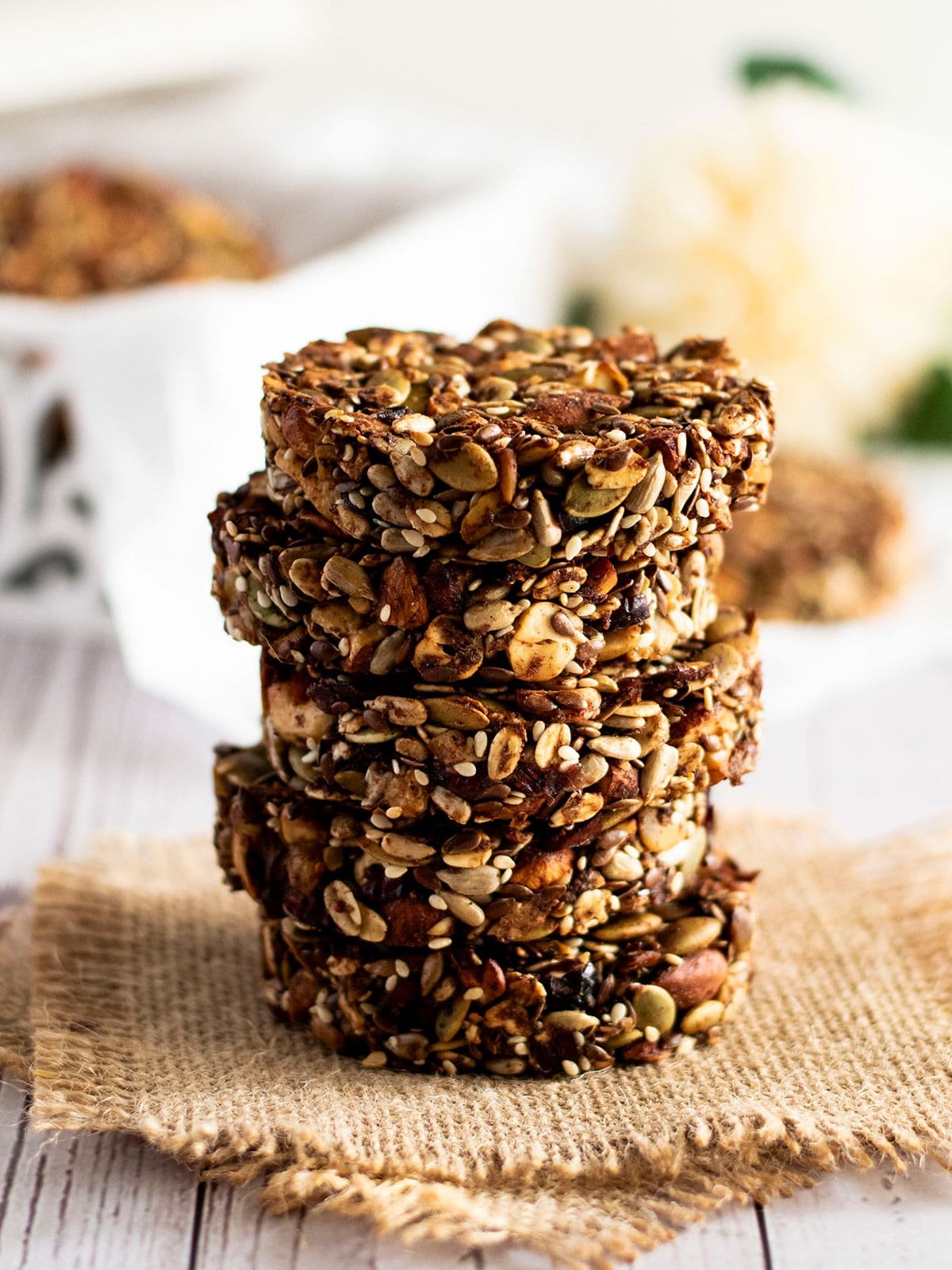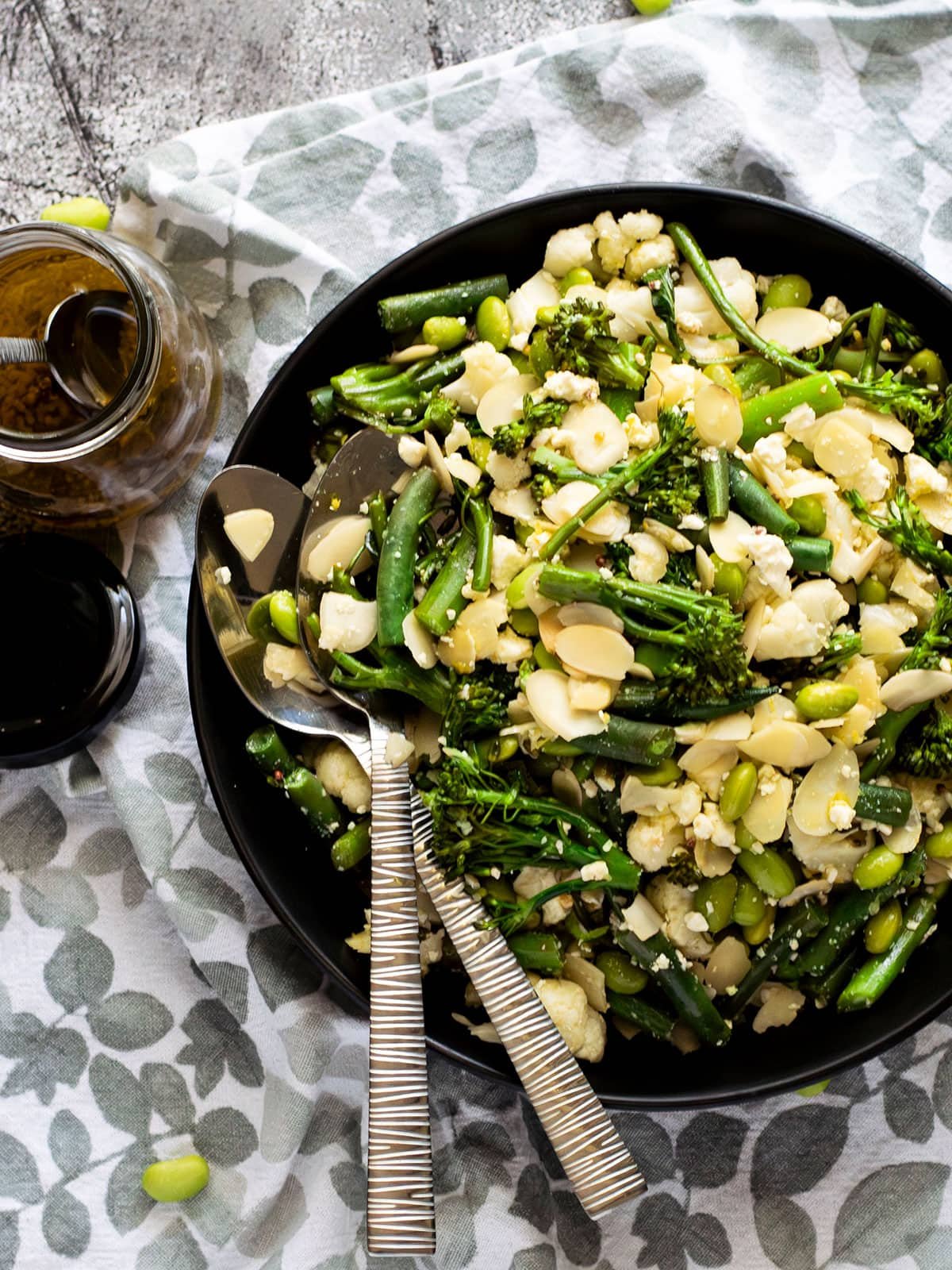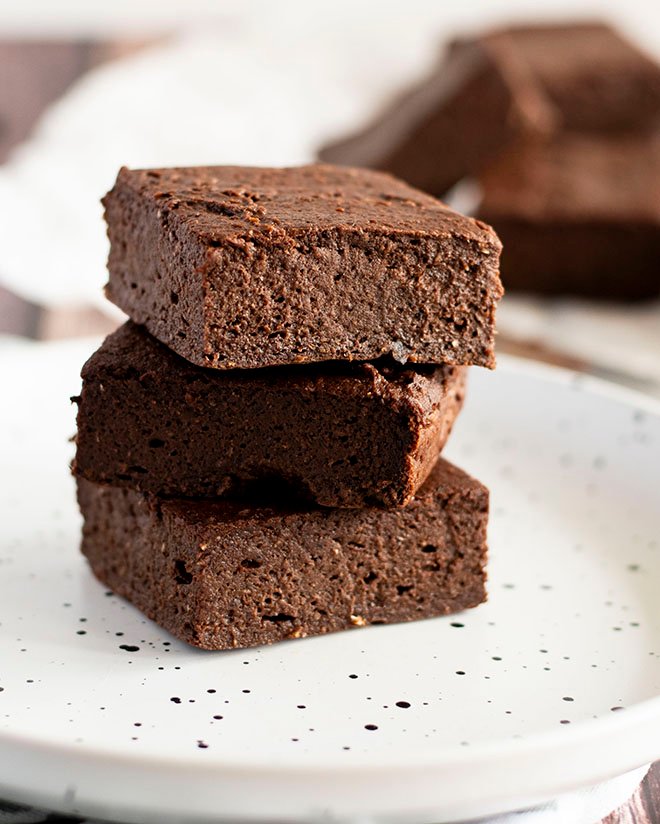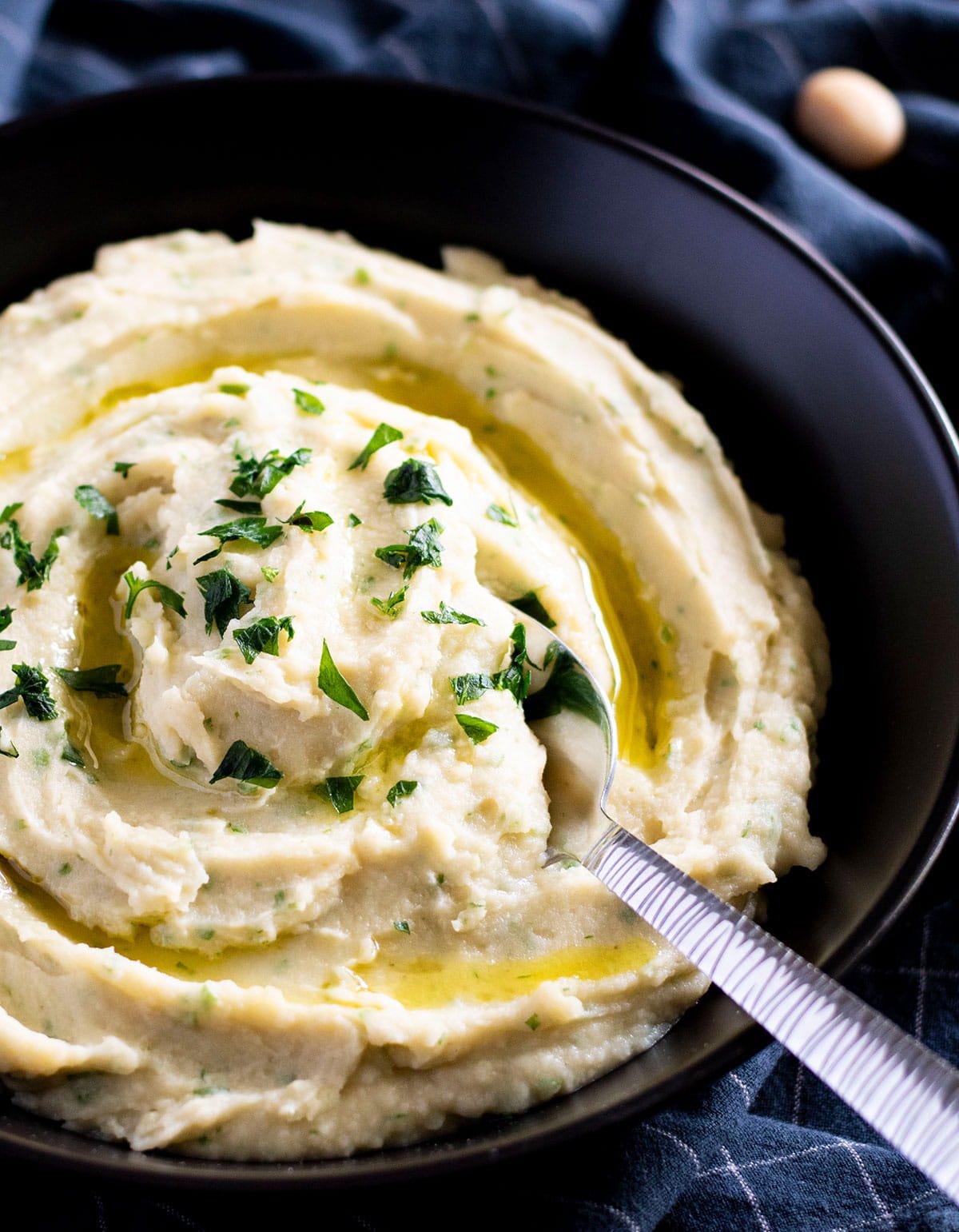Roast Red Pepper Pesto Pasta
Sweet and vibrant roasted red peppers combined with garlic and crunchy cashews create a delightful contrast in this rustic Mediterranean-style, fresh pesto pasta! Finished with a sprinkle of Parmesan cheese, this Roast Pepper and Cashew Pesto Pasta is the ultimate nourishing comfort meal.
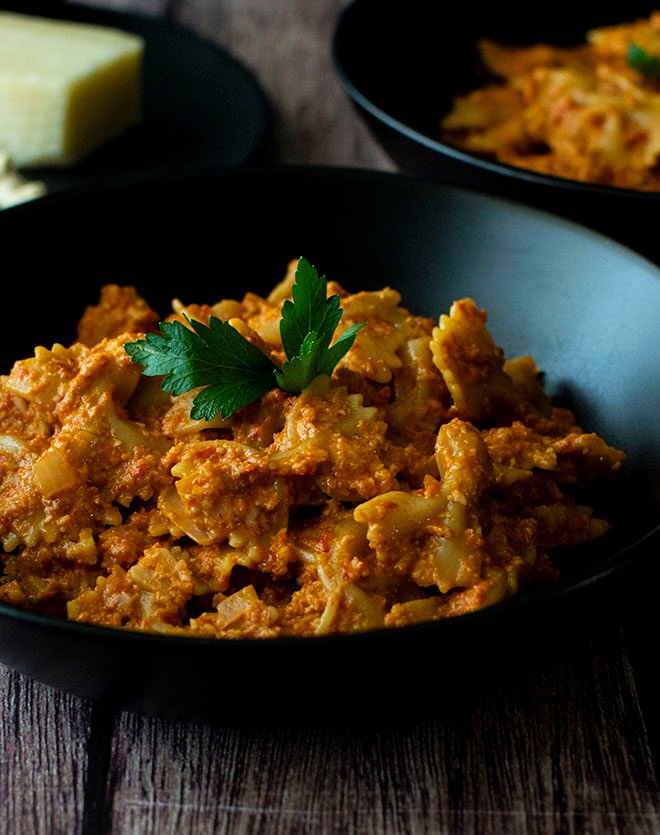
Roast Pepper & Cashew Pesto Pasta
Growing up, I didn’t eat much pesto, mainly because my mother wasn’t a fan of it (but she liked this one!). Traditional pesto is made with basil, garlic, pine nuts, a hard cheese (such as Parmesan or Pecorino), extra virgin olive oil and salt by crushing it all together using a mortar and pestle (let’s face it, ain’t no one got time for that these days!). I was looking at a particular dip (can you guess which one?) in my local supermarket and thought, ‘I wonder how this would go as a pasta sauce?’. As it turns out, it works really well!
Recipe suitability
While store bought pesto is a convenient option, they are often very high in sodium and fat. This recipe is high fibre, with 7.7g per serve, which makes it an excellent choice for supporting gut health. The pesto and pulse pasta boost the amount of protein at almost 22g per serve, making this recipe high in protein. It is also low in cholesterol and sodium. Although made with healthy fats, this recipe is not low fat. This recipe is vegetarian, and with some simple swaps, it can easily be made gluten free and vegan!

What you need for Roast Pepper & Cashew Pesto Pasta
KEY INGREDIENTS
- Red bell peppers (or capsicums in Australia) – Are ideal for this recipe due to their sweetness, especially when roasted! Red peppers are rich in beta carotene, an antioxidant that produces the red colour and helps reduce inflammation and cell damage. Our bodies break down beta-carotene into vitamin A, which helps maintain our eye health. Red peppers are also naturally high in vitamin C, which our bodies use to support skin and tissue health.
- Chickpeas – Adds to the chunky texture. If using canned, opt for reduced or no added salt. Chickpeas are a good source of plant-based protein for muscle development and maintenance. They are also packed with dietary fibre, which helps maintain our digestive health, prevent constipation, and may even help lower LDL (bad) cholesterol levels.
- Unsalted cashews – Add a nutty flavour and crunch. Cashews are rich in monounsaturated fats, which are beneficial for heart health. They’re high in magnesium, which our body uses for muscle and nerve function and maintaining bone health. Cashews also have a decent amount of zinc, which assists with immune system function and helps us taste our food!
- Parmesan – Gives the pesto an umami flavour. Parmesan is a great source of calcium and phosphorus for bone health. However, it is also high in fat and sodium, so it is best eaten in moderation.
- Extra virgin olive oil – Helps to break down the ingredients into a chunky paste and is also another source of healthy fats. Like cashews, extra virgin olive oil is rich in monounsaturated fats but also contains vitamin E, which is an essential nutrient that acts as an antioxidant. Research suggests regularly eating extra virgin olive oil may help reduce inflammation, lower blood pressure and improve blood vessel health.
- Pulse pasta – Is a great alternative to regular pasta as it is higher in protein and dietary fibre, which helps us feel satisfied after eating and keeps us fuller for longer. Some pulse pasta are also gluten free.

OTHER INGREDIENTS
- Sundried tomatoes – Gives the pesto a richer flavour.
- Garlic;
- Brown / yellow onion;
- Spices – I used both sweet and smoked paprika.
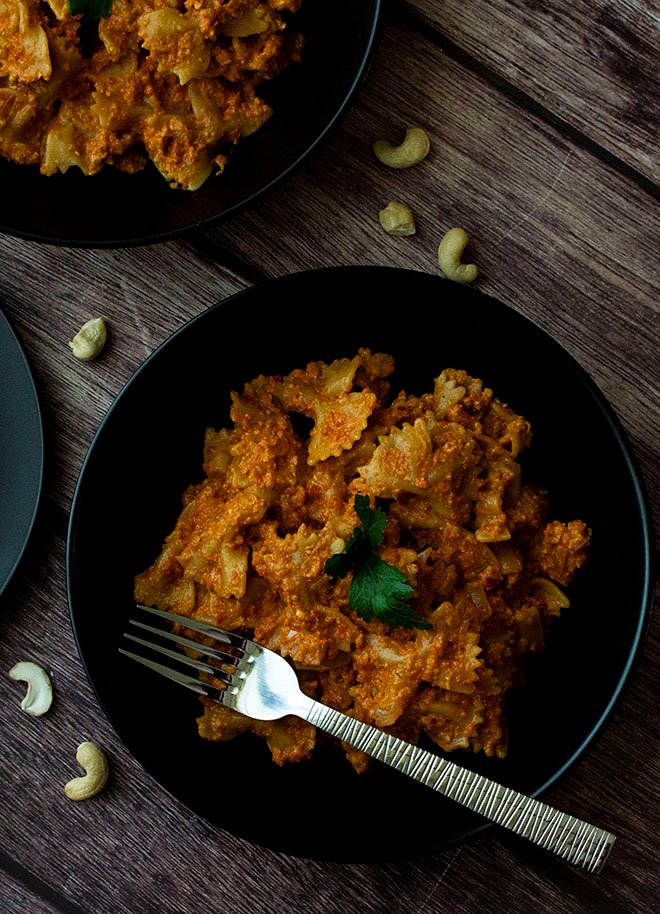
How to make Roast Pepper & Cashew Pesto Pasta
- Put the garlic cloves into the centre of a square sheet of foil and drizzle with 1 teaspoon of extra virgin olive oil. Pull the corners of the foil together to create a pouch.
- Place the garlic pouch and quartered peppers into an air fryer (skin side down), and roast for 10 minutes at 180°C/350°F. Then cook for a further 10 minutes with the skin side up. If using a conventional oven, roast at 200°C/390°F for 12-15 minutes on both sides, or until the skin starts to blacken and come loose. Once cooked, put the peppers and garlic pouch to the side to cool, then remove and discard the skins. The peppers should shrink to roughly 1 cup.
- Add all the pesto ingredients into a food processor and blitz until the ingredients are mixed but still have a chunky texture. Set aside for when the pasta is cooked.
- Bring a large saucepan of water to the boil. Add the pasta and cook according to the packet instructions. Once the pasta is cooked, strain and put to the side. Remember to reserve 1 cup of pasta water! Set the pasta aside.
- Put the large saucepan back onto the stove over medium to high heat. Add a teaspoon of extra virgin olive oil. Once the oil is heated, add the diced onion and cook for 2-3 minutes or until they becomes or until golden and soft.
- Remove the saucepan from the heat and let it cool for 1 minute. Add the pasta, pesto and 1/4 cup of pasta water to the pan and mix thoroughly until the pasta is coated. If you find the pesto still too thick for your liking, add more pasta water (about 1 tablespoon at a time) until you reach your desired consistency.
- Serve immediately while hot with extra grated parmesan and a side salad for extra vegetables. Enjoy!
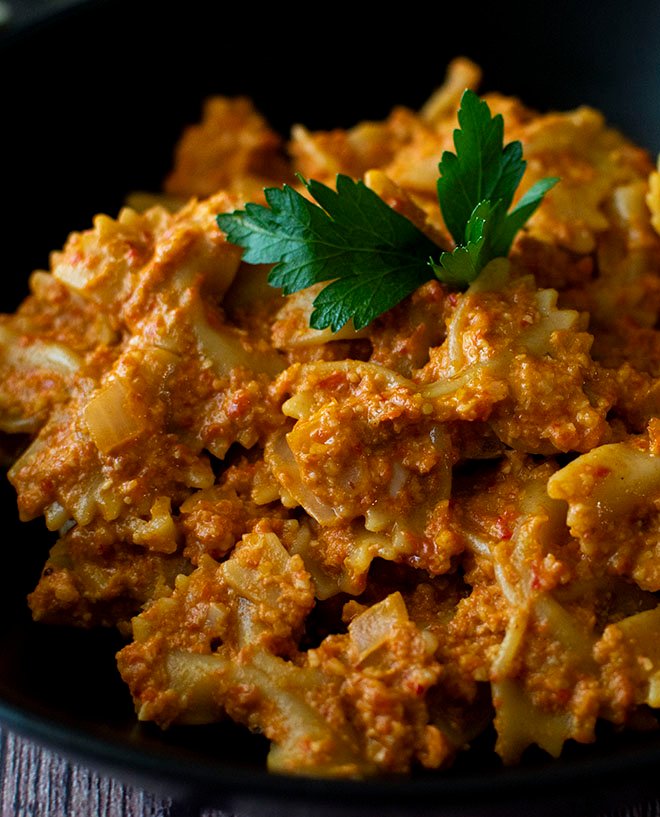
Storage
This pesto should last for roughly 3 days in an airtight container in the fridge and up to 3 months in the freezer. You can also freeze the pesto with the pasta, just allow to cool before putting into the freezer.
Tips & Substitutes
This recipe may not look like it, but it is very filling!
Most pulse pasta available from supermarkets is gluten free; however, if you are unsure, check the packaging (it never hurts to double check!). Otherwise, switch to gluten free pasta to make this recipe suitable for people with a gluten allergy/intolerance.
With the rising cost of living, I understand that pulse pasta is quite expensive ($4.00 for 250g), and may not be a suitable option. A good alternative is wholemeal pasta; it is much cheaper ($1.65 per 500g) and higher in protein and dietary fibre than regular pasta.
This recipe can also be made vegan by substituting the parmesan cheese for nutritional yeast. As nutritional yeast has quite a strong flavour, I recommend starting with 1 tablespoon and adding more to taste.
For a nut allergy, just replace the cashews with more chickpeas.
Hungry for more?
Don’t forget to subscribe to my newsletter and follow along on Facebook, Instagram and Pinterest for all the latest updates!
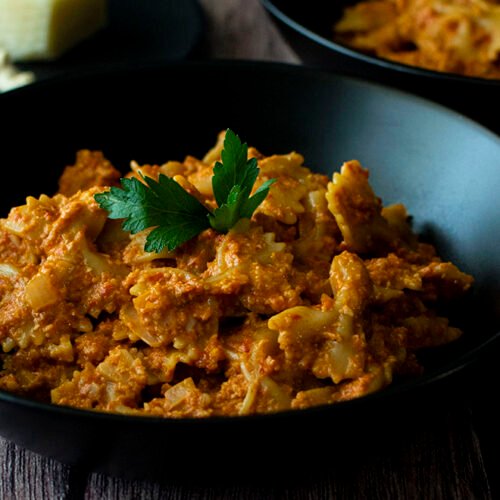
Tap or hover to scale
Ingredients
Roasted Peppers & Garlic
- 2 medium red bell peppers / capsicum (Note 1)
- 3 garlic cloves
- 1 tsp extra virgin olive oil
Pepper & Cashew Pesto
- 4-5 sundried tomatoes
- 1/2 cup chickpeas
- 1/3 cup unsalted cashews (Note 2)
- 1/4 cup parmesan cheese, finely grated (Note 3)
- 1 tsp smoked paprika
- 1 tsp sweet paprika
- 1 tbsp extra virgin olive oil
- 3 tbsp water
Pesto Pasta
- 1 tsp extra virgin olive oil
- 1/2 cup brown / yellow onion, diced
- 200 g pulse pasta (Note 4)
- 1 cup reserved pasta water
- extra parmesan, for serving
Instructions
Roasted Peppers & Garlic
- Put the garlic cloves into the centre of a square sheet of foil. Drizzle with 1 teaspoon of extra virgin olive oil. Pull the corners of the foil together and scrunch to make a pouch.
- Place the garlic pouch and quartered peppers into an air fryer (skin side down), roast for 10 minutes at 180°C/350°F. Then cook for a further 10 minutes with the skin side up. Put aside to cool. Once cooled, remove the skins and set aside. (Note 5)
Making the Pesto
- Add all the pesto ingredients into a food processor and blitz until the ingredients are mixed but still have a chunky texture. Set aside for when the pasta is cooked.
Cooking the Pasta
- Bring a large saucepan of water to the boil. Add the pasta and cook according to the packet instructions. Once cooked, reserve a cup of pasta water and strain the pasta.
Making the Pesto Pasta
- Put the large saucepan back onto the stove over medium-high heat and add the spare teaspoon of extra virgin olive oil. Add the diced onion, cook for 2-3 minutes or until golden and soft.
- Remove the saucepan from the heat and let cool for 1 minute. Add the pasta, pesto and 1/4 cup of pasta water to the saucepan and mix well. If you find the pesto still too thick for your liking, add more pasta water (about 1 tablespoon at a time) until you reach your desired consistency.
- Serve immediately with extra grated parmesan and a side salad. Enjoy!
Notes
- Red Peppers – You can use jarred roasted red peppers to reduce the time, look for one that is low in sodium and sugar. If they are jarred in an oil, I recommend rinsing the peppers first to remove the excess oil, as it was add to the fat content.
- Cashews – Can easily be substituted for more chickpeas, pumpkin seeds or sunflower seeds in the event of a nut allergy.
- Parmesan – Substitute for vegan parmesan or 1-2 tablespoons of nutritional yeast.
- Pulse Pasta – You don’t need a lot of pasta for this recipe as it is deceptively filling. Some pulse pastas available at the supermarkets are also gluten free.
- Oven Conversion – If using a conventional oven, roast at 200°C/390°F for 12-15 minutes on both sides, or until the skin starts to blacken and come loose.
- Storage – The pesto should last for roughly 3 days in an airtight container in the fridge and up to 3 months in the freezer. You can also freeze the pesto with the pasta, just allow to cool before putting into the freezer.
- Nutrition – Calculated per serve, assuming 4 serves using pulse pasta.



